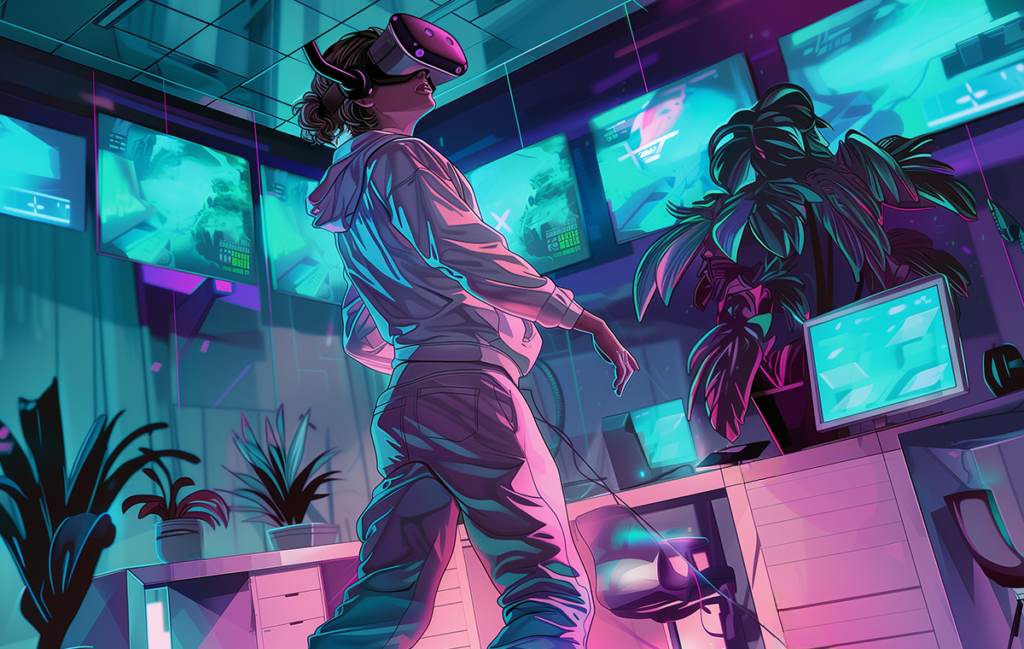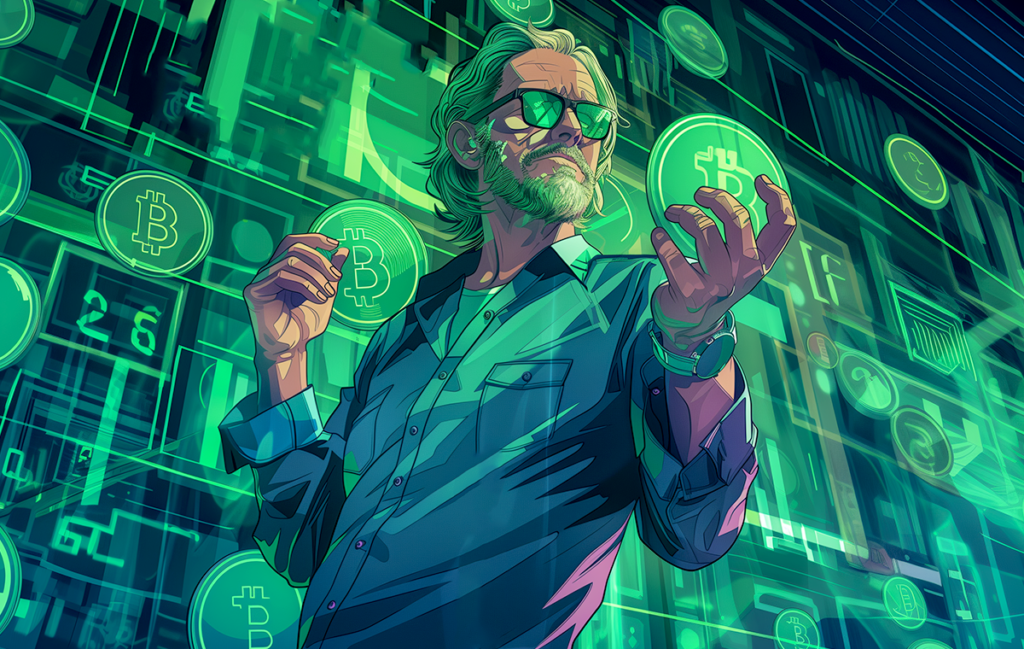
Gaming NFTs Explained: The Role of NFTs in Crypto Games
Gaming NFTs are unique tokens connected to a variety of digital assets in online gaming and the metaverse, such as in-game items, characters, skins, customizations, maps, game modes, tickets, and collectibles. These tokens, unlike standard virtual assets in traditional gaming, are housed on blockchains, which act as decentralized ledgers, ensuring that each NFT has a secure, transparent record of ownership.
NFTs grant digital assets a unique rarity and authenticity similar to that of physical art. These tokens’ ownership data is openly available and permanent. Smart contracts, which are automated programs with precise, coded rules, govern the purchase and sale of NFTs, facilitating the confirmation and monitoring of NFT ownership.
Differences between web2 digital items and non-fungible tokens (NFTs)
Gaming NFTs offer players true ownership of in-game assets, with the ability to trade or sell them, potentially increasing their value. In contrast, traditional gaming assets provide a wider variety of games, lower cost of entry. However, NFTs in gaming might come with drawbacks, such as a high cost of entry, limited game selection, and require a higher level of due diligence. Traditional gaming assets, on the other hand, face issues like lack of true asset ownership, limited options for asset trade or sale, and the risk of in-game assets being lost or deleted.
| Feature | Gaming NFTs | Traditional Gaming Assets | ||
| Ownership | Players own in-game assets as NFTs, giving them verifiable ownership and the ability to trade or sell them | Players have a license to use in-game assets, but they do not own them | ||
| Control | Players have full control over their in-game assets, including the ability to use them in other games or applications | Players have limited control over their in-game assets, and they cannot use them outside of the game they were created for | ||
| Scarcity | NFT assets are often limited in quantity, which can make them more valuable | In-game assets can be created in unlimited quantities by game developers, which can make them less valuable | ||
| Value | In-game assets can have real-world value, as they can be traded or sold for cryptocurrency or fiat currency | Traditional in-game assets have no real-world value, and they cannot be traded or sold | ||
Types of Gaming NFTs
Practically, anything in a game can be an NFT. From in-game items, heroes, virtual lands, or even gaming tickets granting players some sort of special abilities or advantage in the game play. Throughout the relatively short history of crypto gaming, several types of gaming NFTs have risen into popularity. Let’s take a look at the most common types you can encounter in most of the crypto games.

In-Game Heroes
Gaming heroes are one of the most popular and widespread type of gaming NFTs. Just like in any web2 game, crypto games offer a vast variety of characters players can experience in the game and eventually level up as they progress through the gameplay. The advantage of NFT heroes arises from the true ownership and ability to be freely traded, including secondary marketplaces.
In-Game Items
Akin to previous gaming NFT types, any item you enjoy in games can be represented as a unique NFT. Any equipment, skins and cosmetics in crypto games are often integrated into blockchain and act as non-fungible tokens.
Virtual Lands
Virtual lands in games represent a groundbreaking shift in digital ownership and gaming experiences. These lands are unique, tradable digital assets, often part of larger virtual worlds or metaverses. Players can purchase, own, and sometimes even develop these parcels of land, much like physical real estate. This ownership is recorded on a blockchain, ensuring security and authenticity. The potential for customization and monetization of these virtual spaces is immense, allowing players to create unique environments, or host virtual events.
NFT Avatars
PFP NFTs (profile picture NFTs), also known as NFT avatars are non-fungible tokens represented as a profile picture either on social media or within web3 gaming platforms. NFT avatars enjoy popularity thanks to the sense of belonging and community they build among players online. In gaming, NFT profile pictures most commonly represent fan-favorite heroes and in-game characters.
NFT Tickets
Some companies are now incorporating NFTs into the realm of esports, offering unique digital assets as part of tickets, entries, and event experiences. These NFTs can include event admission, special access privileges, digital collectibles, and memorabilia. The concept is to enhance the traditional event-going experience with digital authenticity and scarcity, secured by blockchain technology.
Gaming NFT Utilities

Utility is directly linked to the creation or addition of value, particularly in terms of being useful, profitable, or advantageous to others. Think of NFT utility as a function that NFT grants to its holder. Gaming NFTs possess a wide range of utilities that are tied to in-game experiences or entire gaming ecosystems. Let’s break down the most popular utilities gaming NFTs have nowadays.
Authentic Ownership and NFTs
The concept of authentic ownership, particularly in the context of NFTs, has evolved significantly, transcending the notion of a mere gimmick. NFT ownership endows holders with extensive benefits, including the ability to monetize in-game assets, collect royalties, gain referral bonuses, and, importantly, trade NFTs on secondary markets.
Interoperability and Transferability in the Metaverse
Despite mixed outcomes, the pursuit of expansive digital universes in the metaverse has been intensifying. NFTs play a crucial role in this through their interoperability, allowing the transfer of digital assets across various digital environments. In the gaming industry, this means NFTs can be used across different games, letting players transfer their assets and game progress seamlessly, thereby enhancing the NFTs’ value and enriching the gaming experience.
Airdrops and Reward Mechanisms
In addition to royalty earnings, companies are innovating in engaging users with alluring rewards. Many crypto games have adopted play-to-earn models, where players can gain NFTs as rewards for achievements, event participation, or various in-game actions. These NFTs can hold tangible real-world value, offering players a means to earn. Furthermore, Airdrops often form a part of the reward framework for loyal NFT holders.
Voting Rights and Governance in Crypto Games
Certain crypto games empower NFT holders with governance tokens, granting them influence over game development, rule-making, and decision processes. Players with higher-value NFTs might wield greater voting power. In some games, NFTs allow players to shape the game’s narrative and events, influencing the storyline’s direction.
Community Engagement Through NFTs
NFTs are also leveraged for enhancing user engagement and community building in games. Tactics like whitelists, special events, and early access represent the start. Another significant aspect is the use of PFP (profile picture) NFTs, representing in-game characters and heroes, allowing players to showcase their gaming identity on social media platforms.
Virtual Real Estate Rights
In virtual worlds and metaverse games, NFTs representing virtual land or properties enable players to own, develop, and monetize their digital spaces. Beyond gaming purposes, this aspect is increasingly utilized in marketing strategies, especially with the growth of in-game advertising. The in-game advertising market is projected to reach $32.51 billion in 2023 and is expected to grow at a CAGR of 9.10%, reaching approximately $46.06 billion by 2027. NFT-owned virtual lands are perfectly positioned for in-game advertising placements.
How to buy a gaming NFT
In general, to buy an NFT, you first need to select a digital wallet that supports relevant blockchain currencies, such as Ethereum and purchase a cryptocurrency through a crypto exchange. Once you have your digital wallet and cryptocurrency ready, visit an NFT marketplace like OpenSea, Rarible, or Foundation.
On the marketplace, you can browse through various NFT collections. When you find an NFT you want to purchase, you can either buy it at a fixed price or participate in an auction. After winning or buying the NFT, it will be transferred to your digital wallet, and you’ll have ownership of that unique digital asset. Remember to consider additional costs like gas fees (transaction fees on the blockchain) during this process.
In gaming NFTs, the process is highly similar or the same, since gaming NFT can be also purchased on the popular NFT marketplaces. However, there are several marketplaces that specialize in gaming NFTs and offer a wide palette of non-fungible tokens dedicated to gaming. For instance, on QORPO WORLD, players can explore numerous popular web3 games, launch them, play them, and browse the latest gaming NFTs under one roof.
NFT Rental in games – how does it work
Albeit not as widely talked about, NFT rental is a unique service where NFT owners can temporarily rent out their NFTs to others, allowing borrowers to use them for a limited time. This feature is available on platforms that use DeFi protocols to ensure the NFT’s return to the owner after the rental period ends.
NFT rentals are managed through smart contracts, automating transactions based on set conditions.
Collateral rents
For collateralized rentals, NFT owners list their NFTs on marketplaces, and borrowers initiate the process. The NFT is locked in a smart contract with rules about duration, collateral, and terms. Once agreed upon, the smart contract transfers the NFT to the borrower and later returns it and the collateral after the rental period.
Non-collateral rents
In non-collateralized rentals, instead of the original NFT, a wrapped NFT is minted and provided to the borrower. This wrapped NFT is destroyed after the rental period. Some NFT ecosystems have their own rental systems. Borrowers pay rental fees and transaction fees. Renting NFTs offers various utilities, like breeding tokens or accessing specific communities, depending on the contract’s terms. This system provides income for lenders and unique experiences for borrowers. You can seamlessly lend or borrow NFT through platforms such as reNFT, IQ Protocol or DeFy.
Conclusion
In conclusion, gaming NFTs represent a significant shift in the digital gaming landscape, offering players genuine ownership, tradeability, and a range of utilities in online games and the metaverse. From in-game heroes to virtual lands, these blockchain-based assets enhance the gaming experience with their uniqueness, scarcity, and real-world value. While traditional gaming assets have their advantages, NFTs in gaming extend beyond mere gameplay, impacting community engagement, in-game economics, and even virtual real estate. Furthermore, innovative concepts like NFT rentals open new avenues for both asset utilization and monetization, catering to both asset owners and players.

